Why Is My Sourdough Starter Runny?
This post may contain affiliate links.
A common problem when it comes to sourdough starter is the consistency. You might be asking why is my sourdough starter runny or watery?
There are actually many different reasons for runny sourdough starter, all of which can be fixed fairly simply.
Your sourdough starter can be runny because:
- Sourdough starter feeding ratio.
- You're not weighing your ingredients accurately or measuring by volume.
- It's too warm in your kitchen.
- The flour you're using needs less hydration.
- You're not feeding your starter regularly enough.
You'll find an easy guide to making a sourdough starter from scratch here.
Is My Sourdough Starter the Right Consistency?
What consistency should a sourdough starter be? Ideally, sourdough should be the consistency of warm peanut butter.
When it's just been fed, it should be quite thick. It's actually ok if it seems a little dry. As the starter ferments, it will absorb the flour and thin out just a little.
When it's at peak, it should be thick, airy and mousse like.
If your sourdough starter is runny or watery, you might need to tweak things a little bit to make it thicker.
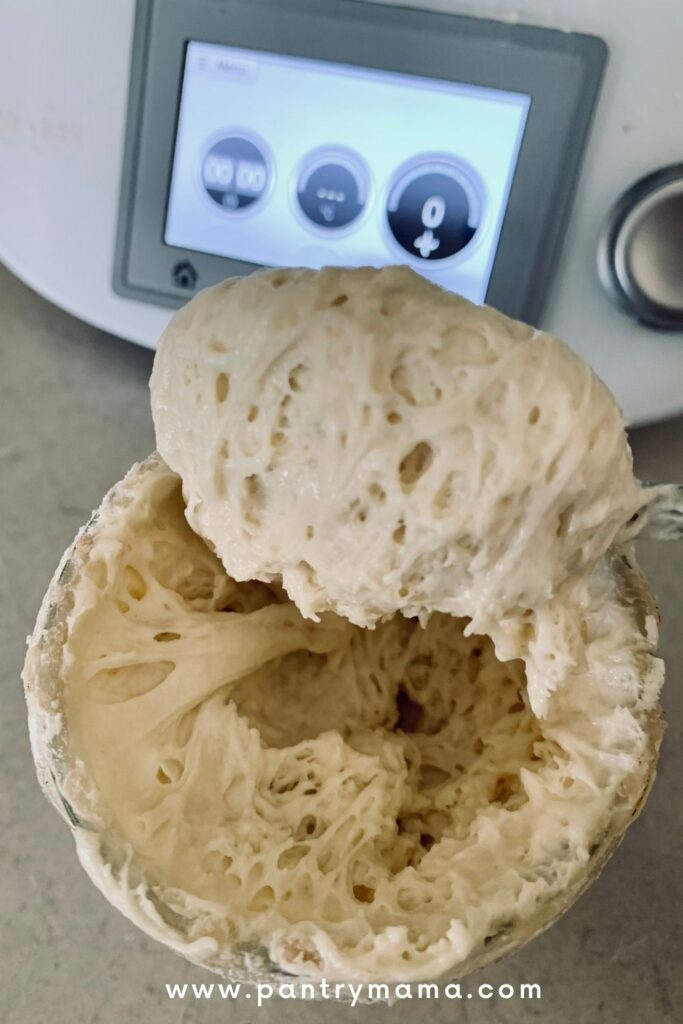
Problems With Watery Sourdough Starter
The problem with a runny or watery sourdough starter is that it may not behave like it's meant to. You will find that it can be somewhat problematic.
Excess water in your sourdough starter will mean that your starter isn't performing optimally.
You may notice some of these problems with a runny sourdough starter:
- Constantly smelling like acetone or nail polish remover.
- Doesn't rise much or get aerated textures.
- Doesn't bubble as much as you expect.
- Produces hooch more often or seems like it's separating.
- Develops mold and needs to be thrown away.
How To Fix A Watery Sourdough Starter?
Here are the five things that can cause your sourdough starter to be runny or watery. They are all easy to fix.
1. Sourdough Starter Feeding Ratio
The ratio you feed your sourdough starter can affect the consistency.
Generally, it's best to feed your starter 1:1:1 - which means if you had 50g of starter (after discarding), you'd feed it 50g of flour and 50g of water.
With this ratio, you can use any amount of starter. You'd just feed it the same amount of flour and water. So you could use 125g of starter and feed with 125g of flour and 125g of water.
If your starter is too runny, it maybe that you need to increase the ratio. A ratio of 1:2:2 can work - so you'd double the flour and water.
Alternatively, if your starter is very runny, a 1:2:1 ratio could be used. This would mean that for 50g of starter, you'd feed it 100g of flour and 50g of water.
This ratio will be quite stiff to mix at first, but it will thin a little as it ferments. It might need a stir around 1 hour after feeding it so that you ensure all of the flour is dissovled.
Read more about increasing a sourdough starter using ratios.
2. Weigh Ingredients By Weight
Weighing the ingredients for your sourdough starter by weight is so important.
If you are using cups or spoons to measure the ingredients, you will risk having a watery sourdough starter that doesn't rise.
This is because measuring by volume is not universal or accurate and will mean that you are not following a 1:1:1 ratio.
You can see the differences in the cups below - this would cause big problems for your sourdough starter!
Read more about the benefits of weighing sourdough ingredients by weight.
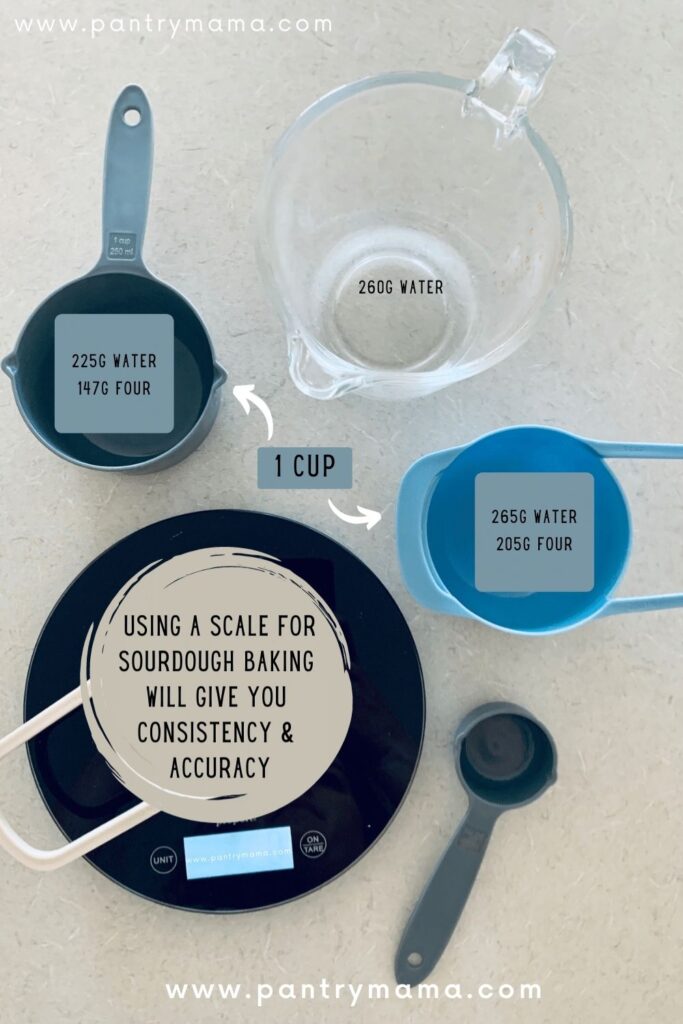
3. Check The Temperature
Temperature plays a huge part in the fermentation and growth of your sourdough starter.
Too cold and your starter won't rise.
Too warm and your sourdough starter will use the flour and water you feed it too quickly. This will mean that your starter will become runny and watery.
If it's really warm and you don't feed the starter enough, it could also start to develop hooch.
Ideally, you should keep your starter at a constant temperature - somewhere between 24C to 28C is perfect.
This is not always possible, however you can artificially create a constant temperature for your sourdough starter using a bread proofer or even a yoghurt warmer. You can find more ideas to for creating constant temperatures here.
High humidity can also make your sourdough starter more runny. You can read about how to treat your sourdough starter in humidity here.
4. Change Your Flour
Flour choice makes a big difference to your sourdough starter.
White flour (either all purpose or bread) is absolutely fine for making a sourdough starter (as long as it's unbleached). However, white flour doesn't absorb as much water as wholegrain or rye flour.
This means that if you use all purpose or bread flour for your starter, you may need to use slightly less water. Not all the time, but it can make a difference.
If you are having ongoing problems with a runny sourdough starter, adding some whole grain flour like rye or whole wheat can be a good solutions.
You could use a blend (so 50% bread and 50% rye for example) or you could just feed rye flour for a few days to see if it makes a difference.
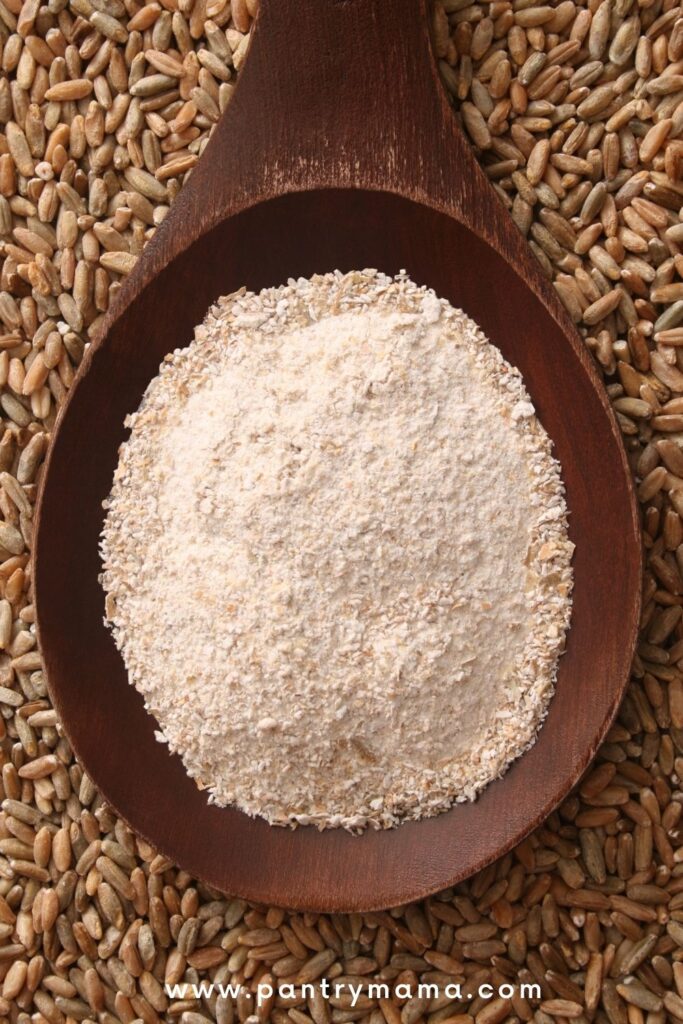
5. Feed Starter More Regularly
If you are leaving your starter unfed for longer periods (even just 24 hours) it could become more runny than it should.
Ideally, if yours starter is left on the counter, it needs to be fed every 12 hours. This is particularly important if your are still in the establishment phase (first 4 weeks).
If you feed your starter every 12 hours while it's on the counter, you will reduce the likelihood that it's hungry and prevent it from producing hooch, which can cause it to become more runny than normal.
Just a note here - it is normal for a sourdough starter to be stiffer when you first feed it and then thin out a little as it ferments.
It should however be mousse like and aerated when it peaks. It may become runnier if you then don't feed it and let it go back down.
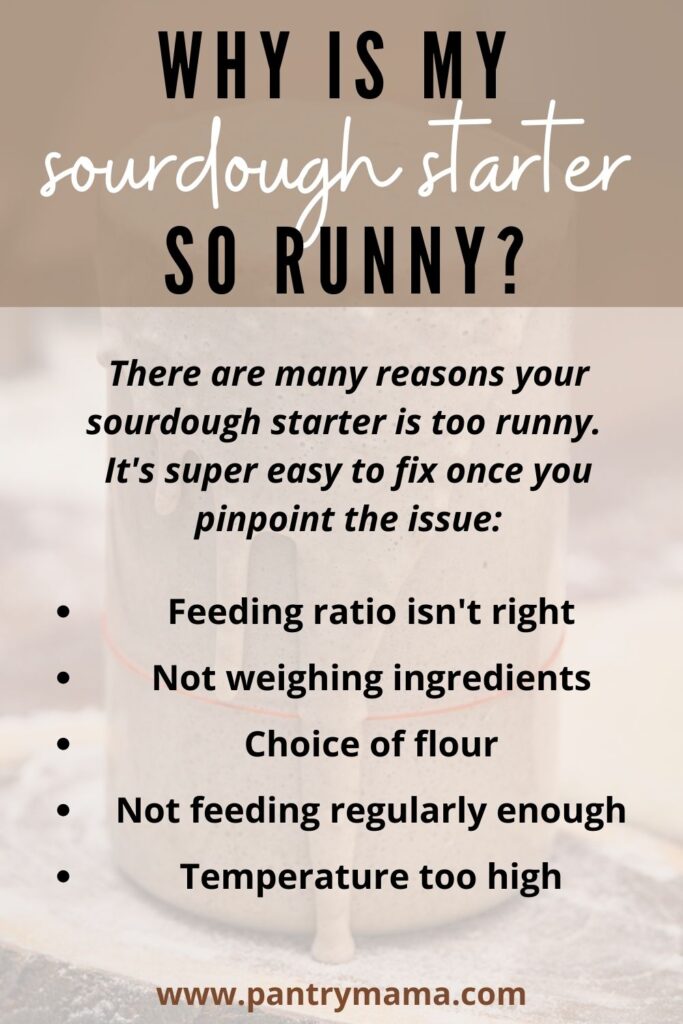
Can You Use A Runny Sourdough Starter?
While it's better for sourdough starter to be a bit on the thicker side, you can still use a thinner starter.
Providing that it's been fed regularly and is showing all the signs of baking readiness (and none of the problems mentioned above), you definitely can still use it to make sourdough.
If you are using a thinner starter, it is a good idea to slightly reduce the amount of water in the recipe to counteract the extra liquid in the starter.
If you don't reduce the liquid in the recipe, you will end up with a much higher hydration dough.
The implications of this is that it will ferment faster and be at risk of over fermenting and being impossible to shape. You risk ending up with wet, sticky dough.
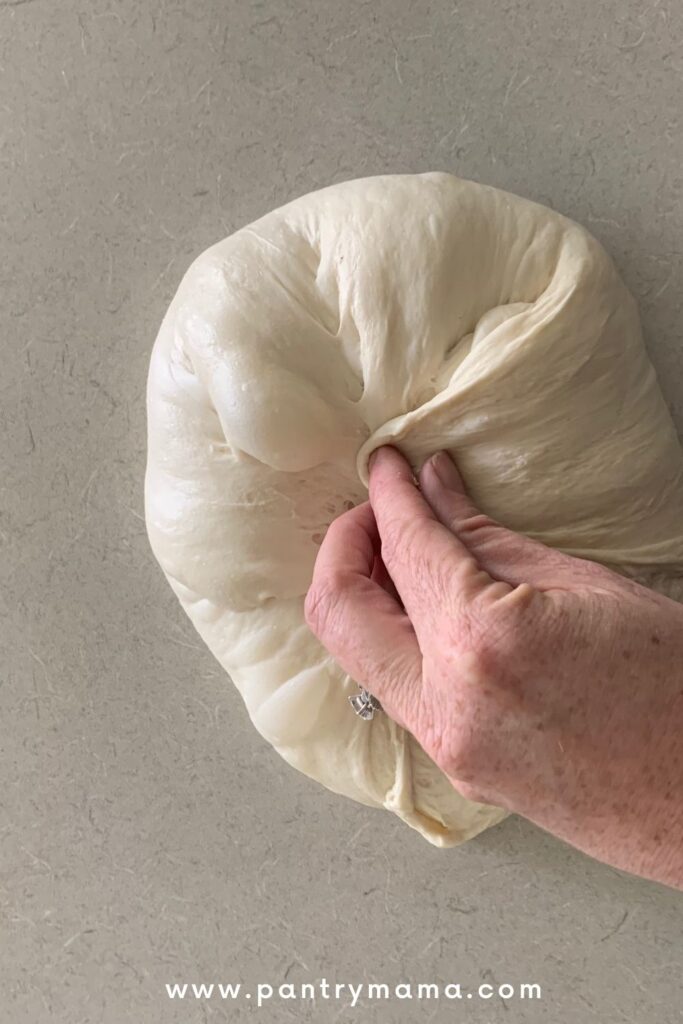
Frequently Asked Questions
Ideally your sourdough starter should be the consistency of warm peanut butter. It should be pourable once at peak, but have a mousse like, aerated texture.
You can literally use any kind of flour for a sourdough starter - as long as it's not bleached. I recommend using all purpose or bread flour for your starter, but you can use whole wheat or other whole grain if you prefer.
The flour you choose can affect the consistency of your sourdough starter and a white flour may result in a runnier starter unless you adjust the amount of water you use.
In general, sourdough starter is referred to as liquid sourdough starter - this differentiates it from dried sourdough starter or a stiff sourdough starter (like pasta madre).
Liquid sourdough starter should still be pourable, but not runny.
Sourdough starters are super resilient. Unless you can see visible mold on your sourdough starter, chances are you can successfully revive it. Even sourdough starter with a thick layer of black hooch can be brought back to life.
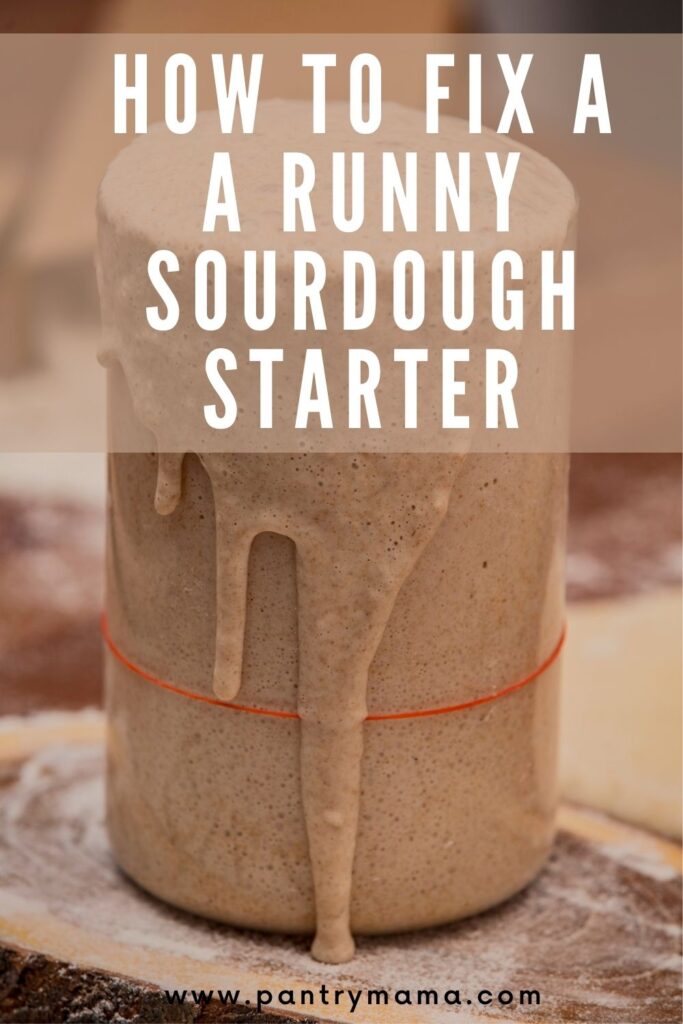
Further Reading
If you've found this article about how to fix a runny sourdough starter helpful, you might like to check out these:


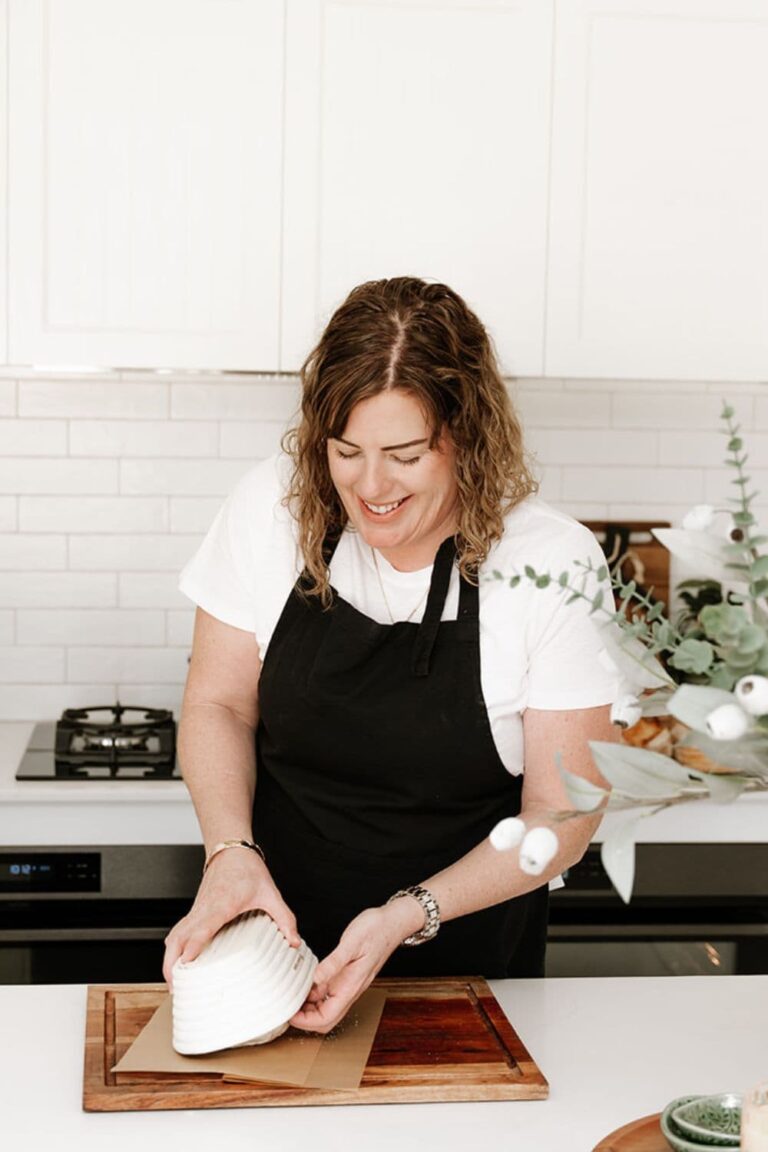
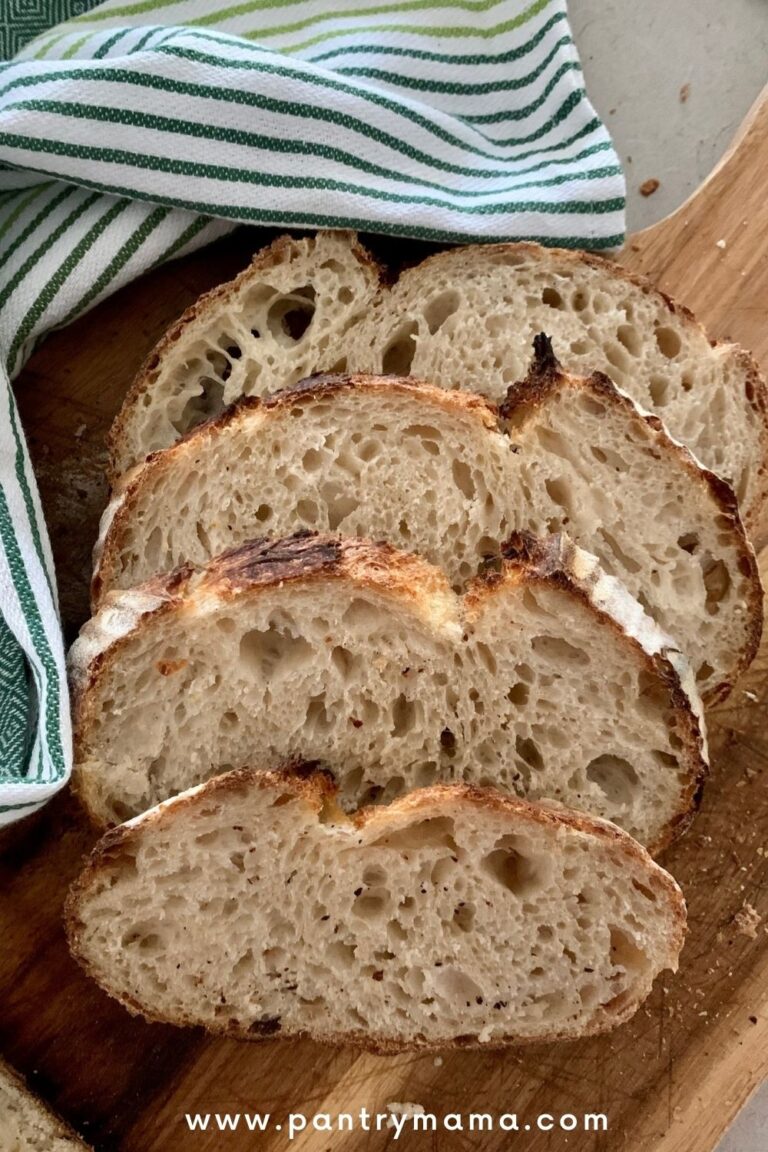
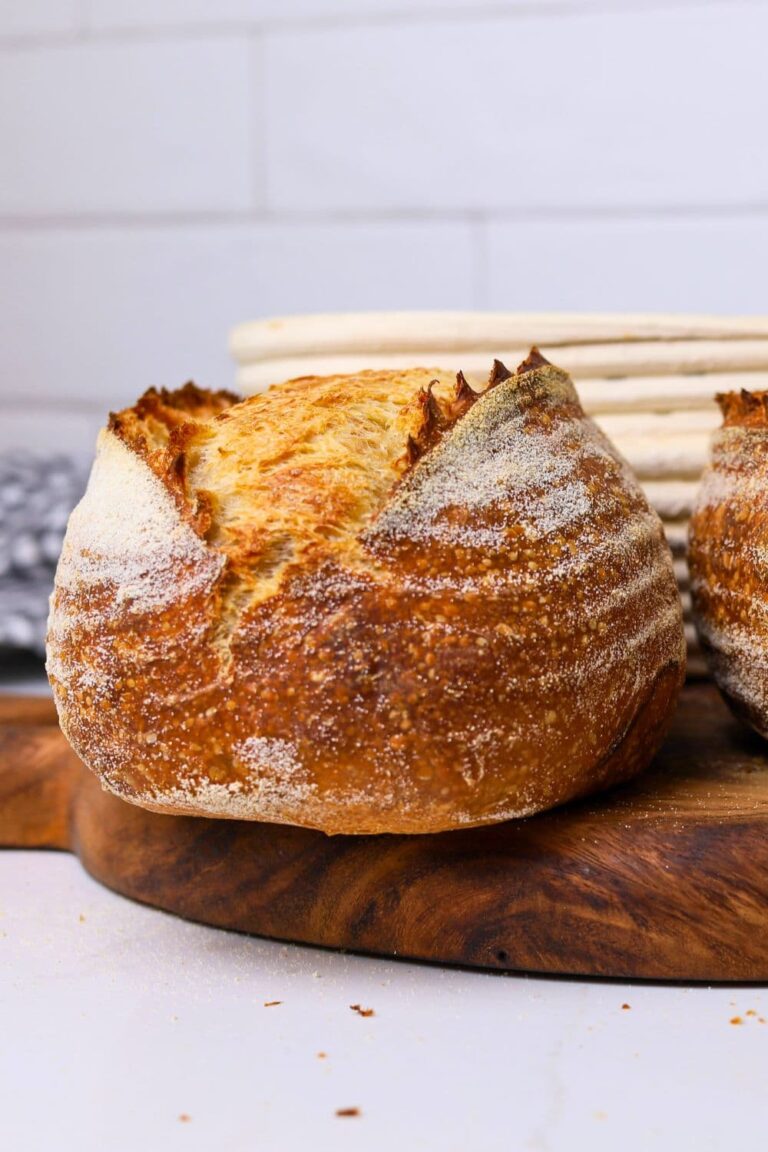
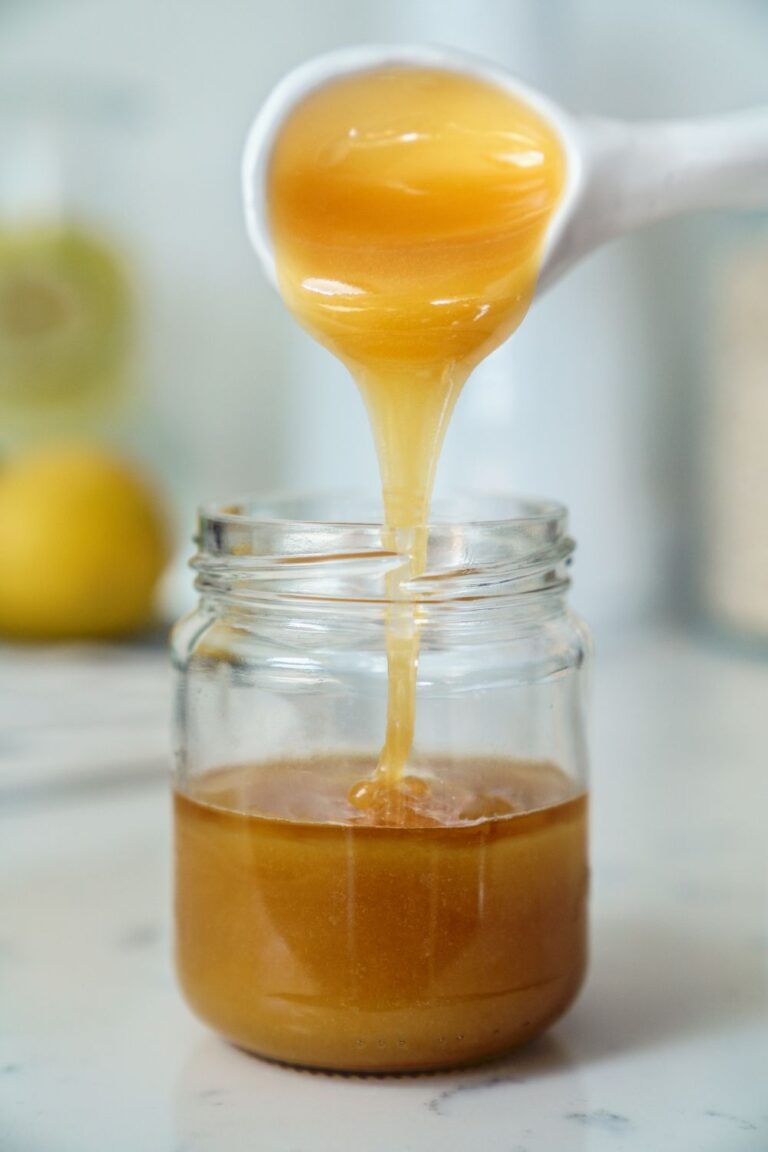

Thank you for this article! I live in the central desert and I struggle with my starter and bread making in general with the high altitudes. I really appreciate these tips and tricks!!!
The best starter site I have come across!
Runny Joe 💋
Question; I feed my starter once a day with King Arthur All Purpose, and keep at at a constant 73 dergrees (F) with a Brod & Taylor Sourdough Home - I use a ratio of 1:3:3 and in 8 hrs it has tripled and stays that way for another 2-3 hrs. I've had a lot of sucesss with it, but it only has about 1/2 the "texture" displayed in the first image above. I know I should be happy with how well it works, but I'd LOVE to have the texture in that image. What should I change?
Thank you! PS - I absolutely LOVE your recipes.
My sourdough bread has large holes surrounded by very dense bread. I am trying to figure out what the problem is. Thoughts from anyone?
Good God man this is a journey.
Thanks for the Intel.
Thanks to your trick to make my starter less runny - it worked! How much longer should I feed it until I can bake with it? and will I need to keep the same ratio - like 1:1:1?? This is my first time trying to make a starter. Thank you!
I found a wild yeast sourdough starter recipe that calls for warm milk and flour. I measured the ingredients and put it in my cold oven with the oven light on. After 24 hrs
it produced hooch but is very runny. Should I discard half and replenish? The temperature in my house is 68 degrees, that's why I put it in oven. I've tried the flour and water starter and can't get that to rise much either. Any help would be appreciated.
Definitely stick to flour and water rather than milk. I would start again using these instructions 🙂
Thank you so much for this article! I now know how to move forward with my starter. Very helpful and informative.